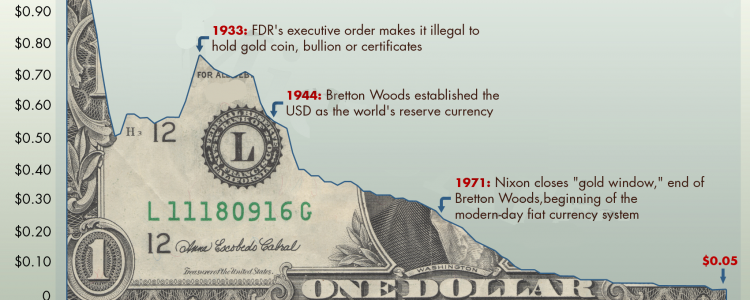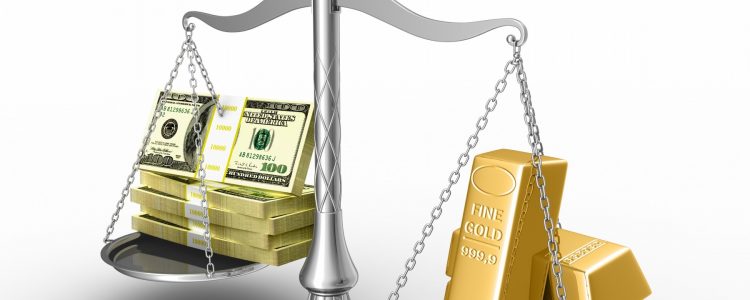It is time to revisit the Fiat Money Quantity (FMQ), which totals US dollar money deposited in the banking system, the commercial banks’ money on deposit at the Fed and physical cash.
Besides alerting us to how the expansion of fiat money is progressing, an objective of this exercise is to give some guidance on the price relationship with gold. It is particularly appropriate at a time when banking analysts have turned generally bearish, believing that the rally in gold is now over.
The idea behind FMQ is to define the quantity of fiat money, which can then be compared with the value of monetary gold, which is some or all of the above-ground stocks of physical gold. The long-term chart update is shown below.

The chart shows the long-term trend of FMQ growth established before the financial crisis, and the subsequent effect of the monetary measures introduced to rescue the banking system. This rapid expansion of FMQ warns us of the potential effect of monetary inflation on prices. Most of this is for the moment latent, because the expansion of FMQ has been mainly of bank reserves held on the Fed’s balance sheet, and therefore not currency in public circulation.
The last monthly data point is September 1, and the rise of FMQ is showing signs of accelerating again. Within that acceleration, there has been a fall in bank reserves held at the Fed from $2,786.9bn in August 2014, to $2,265.3bn. This is more than compensated for by a greater rise in customer deposits and savings accounts, from $9,006bn to $10,571bn. The worry, when the Fed created excess reserves mainly through quantitative easing, was that these would be one day used to fuel fractional reserve lending. The other side of bank credit is customer deposits and savings, so the fear originally expressed has come to pass.
The expansion of bank lending can also be detected in the next chart, which is of M2 money supply minus M1, which gives an approximation of bank credit.

In this chart, the expansion to above-trend growth started at the beginning of 2016. Between the two charts, we can confirm that both customer deposits and bank lending are accelerating above recently established trends.
The expansion of bank credit is not being picked up yet by many commentators, but it is a serious issue. This could be because lending growth within the US’s domestic economy appears to be moderate. The answer must lie partly in international lending, particularly to foreign banks and emerging market economies not offered dollar swap facilities at the central bank level. Certainly, USD LIBOR rates are considerably higher than the rate paid by the Fed on bank reserves, perhaps reflecting international demand for dollar loans.
If the decline of reserves at the Fed is the consequence of currently higher money-market rates, the expansion of money has entered a new phase. Further expansion of bank credit will have to be controlled by raising the Fed Funds Rate, at least to close the gap on LIBOR. So an increase in the FFR is overdue, and probably should be more than the 0.25% everyone seems to expect, to bring bank credit growth under control.
The Fed has a problem with raising rates by the required amount, because it would widen interest rate differentials with other major currencies. The dollar is strong enough as it is, and any rise in dollar interest rates seems likely to encourage further dollar strength, leading to potential currency instability. Then there is the question of the effect on asset values, particularly government bonds, not only in the US but particularly in the Eurozone. If bond yields rise, valuations of equities and property will also be threatened, not to mention the cost of government borrowing rising. At the moment there are political pressures on the Fed to do nothing during the presidential election, but that will no longer be an issue by December’s FOMC meeting.
Implications for placing a value on gold
Always bearing in mind that both the price of gold and the purchasing power of the dollar are both subjective variables, their relative quantities will always be a factor behind prices. We have managed to define, so far as we can, the quantity of fiat dollar currency deposits, but what is the quantity of gold, for the purpose of determining a theoretical value for it?
It so happens that James Turk with the assistance of Juan Casteñeda produced a white paper on this subject in 2012i. Based on his work, we can assume that today’s above-ground stock is approximately 169,000 tonnes, a figure incidentally about 10,000 tonnes less than other estimates. The question then arises, how much of this can be regarded as monetary gold?
Officially, central bank reserves total 33,978 tonnes, or 20% of our estimate of above ground stocks. In theory, this gold is not available to the public as money, because no central bank today operates a gold exchange standard. But we also have further problems with determining the quantity of so-called monetary gold owned by governments and their central banks. We are confident that declared reserves are not the full extent of government holdings of gold bullion, particularly with China, and possibly Russia as well. Furthermore, gold reserves are known to be double-counted in many cases, because gold which has been leased or swapped is reported as if it is still the unencumbered property held by the reporting central banks. Furthermore, there is no way of knowing if governments are actually being honest in their declarations.
This is particularly true of the US Treasury, which according to the Fed’s accounts, owes the Fed 8,133.5 tonnes of gold. Whether or not the US Treasury actually possesses this gold is unclear, and beyond inquiry, because the UST’s gold bullion has been frequently used by the Exchange Stabilization Fund to manipulate prices. Created under the Gold Reserve Act of 1934, the ESF is secret and not accountable to Congress or the American public.
We are asked to believe, in defiance of the ESF’s mandate and anecdotal evidence to the contrary, that the ESF has not materially altered its physical gold balances in the last thirty-five years. Furthermore, given China and Russia have ramped up the strategic importance of gold, it is not beyond the bounds of possibility that the US has secretly been stockpiling physical gold outside Treasury accounts. We just don’t know.
There is also the vexed question of jewelry, which is commonly thought to represent about 60% of above-ground gold stocks. We are aware that the Indian sub-continent regards gold jewelry as a form of long-term saving and collateral for emergency funding, but how about anyone else? We generally regard gold as valuable, but that’s not the same thing as regarding it as money, though public opinions are likely to change in this respect if the gold price rises significantly.
This leads us towards some flaky estimates for the quantity of today’s reserve currency, US dollars, in issue per ounce of gold. We could take the official reserves figure from the US Treasury of 8,133.5 tonnes, and say that each ounce covers $56,171 of fiat currency. But that’s meaningless, because there is no convertibility and we cannot rely on the accuracy of government figures for the quantity of gold it holds anyway.
The best we can do is to take market prices for gold and adjust them for the increase in the fiat money quantity, taking a point in history for reference. The next chart takes 1934, the year when the gold exchange price was raised to $35, not that it could actually be exchanged by the public.

The two plots give us a maximum and minimum to suit all tastes of speculation. The upper line (dark blue) is the gold price since 1934 deflated by both FMQ and the increase in above-ground gold stocks, while the lower line is the gold price since 1934 deflated by FMQ only. This gives gold today an adjusted value range in 1934 dollars of $3.76 to $12.87, at today’s nominal price of $1250.
Admittedly, the $35 price in 1934 was not necessarily a fair market price, being commanded by the Roosevelt government, but our intention is not to give a precise definition of gold’s value, because as stated at the outset, all values are actually subjective. We can only speculate that if gold priced in dollars today bore the same relationship to the quantity of dollars in existence some eighty years ago, the price range in today’s dollars would be between $4,000 and $11,640.
Returning to the accelerating path of FMQ, our assessment of its effect on gold’s value does not discount further rises in FMQ. If, or perhaps when, gold moves up above current levels towards $2,000, it is likely there will be a wider realization of the inevitability of accelerating monetary inflation. In this event, the general price level will be rising faster as well, and interest rate rises could prove insufficient to support the dollar’s purchasing power. A falling purchasing power for the dollar inevitably means a rapidly rising gold price.
In conclusion, not only is FMQ continuing to grow above its long-term trend, but it appears to be accelerating because banks are drawing down their excess reserves to increase their lending. The inflationary implications at the price level are obvious. Gold is already under-priced to a substantial degree. Therefore, further expansion of FMQ seems certain to eventually lead to a complete reassessment of the price relationship between fiat dollars and physical gold, to gold’s benefit and the dollar’s detriment.
Gold and silver have performed best as governments financially collapsed. These precious metals are your ONLY hope for hedging protection against a crashing American dollar and global stock markets. This makes them the best form of investment insurance for your retirement portfolio. Click here to obtain your free gold IRA rollover kit from Regal Assets so that you can have all of the critical information on how to best protect your portfolio using tangible gold and silver.
Gold Investment is the alternative currency that can safeguard you from these types of events. Putting a portion of your savings into this precious metal will help protect you. Download your free self directed IRA rollover gold IRA information kit today.












